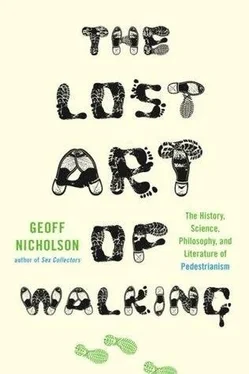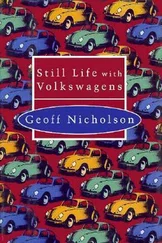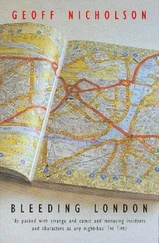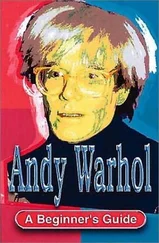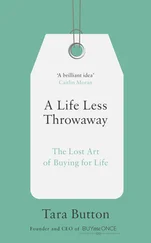Terwilliger said his least favorite neighborhoods were SoHo and the Upper East Side because there were ‘too many tourists, ‘suits’, and folks who would be scared to death by the thought of walking around Mott Haven or Crotona Park East after dark’. Terwilliger also claimed that the most dangerous zip code was ‘10039 (South of the Polo Grounds Projects around the 150 sand Frederick Douglass)’. Even he didn’t walk there at night. He writes:
‘When walking here at 3 PM a group of men hanging out on the corner turned to me and said ‘Good afternoon, Officer’.…Nice to know I looked like an undercover cop — being a big tall guy with short hair is a good thing sometimes.’
But only sometimes, I think.
Clearly, on this brief New York trip of mine I wasn’t going to be able to complete anything of any great substance. Nevertheless I was still keen, edging toward desperate, to undertake a walk that would mean something and have some psychogeographic resonance to me, if nobody else.
♦
When I lived in New York in the 1990 sI learned to drink martinis, and I also learned that sometimes it was better not to drink martinis. I often thought the Manhattan cocktail would have been more appropriate, given its name, but for me it never addressed the pleasure and pain receptors in quite the way a martini did. A martini felt more like a drug than a drink. It had my name on it. It hit hard: it wasn’t for wimps.
After a martini or two I would walk the dark streets of Manhattan feeling a little ‘bagged’, a bit ‘lit up’, with a new sense of power and possibility, and as I found out later, risk being run down. I wouldn’t have cared. Certain edges were taken off and certain others (the ones to do with feelings of invulnerability and inflated self-esteem) were sharpened up in their place. It wasn’t quite sensory derangement à la De Quincey, but it was definitely an altered state, and that was good enough. Sometimes it felt like flying as much as walking.
I was two martinis to the good when I first proposed to the woman who’s now my wife, but who was then more or less a complete stranger. We were walking down Crosby Street, an access street parallel to lower Broadway, and I had spent a total of one hour in her company. She didn’t say no.
Later, once we were an item, there were many nights when we walked through Terwilliger’s hated SoHo, where her office was, heading north up Thompson or Sullivan Street, and ahead of us was the illuminated Empire State Building and behind us the illuminated Twin Towers, and we said that one of these days we’d have to go up to Windows on the World, the swank bar and restaurant in the north tower, and have a martini or two. It never happened. We didn’t know there was any reason to rush.
♦
I wasn’t in New York on September 11, 2001. I was three thousand miles away in England. My wife was two and a half thousand miles away in the opposite direction visiting her sister in Washington State. After the event I spent some time wondering whether we should consider ourselves lucky, or if we should regret having been absent at such a crucial and calamitous moment in history. There was some guilt, too, because by then I felt like a New Yorker and it seemed only right that I should have to go through what other New Yorkers had gone through.
As soon as I could, I got on a plane and went back to New York. Once there I walked the streets, and saw that dust and shreds of paper were still falling all over the city, and there was a strange smell in the air that was reported to be horrifying, a combination of jet fuel and incinerated human flesh, they said, but it really wasn’t so bad.
And I did what everybody else was doing. I walked to Ground Zero, to see what there was to be seen. I joined the procession of people a mile or more from the zone, on lower Broadway, a long stream of walkers that got broader and flowed less freely as it neared its destination. It was a solemn crowd but not a quiet one. This was New York. There was some yelling, some bad temper, and at least half the crowd was shooting stills or video, though I don’t know what they were seeing.
We were kept at bay, behind barriers. The viewpoint we were allowed was a distant one, and even the most powerful telephoto lens wouldn’t have got you in very close. We could see rubble, a spout of water being hosed from a great height, and we could just about make out the famous twisted, perforated façade, but it wasn’t nearly so clear or so dramatic as the pictures we’d seen in newspapers and on TV.
In the end there was very little to see. As a place of pilgrimage, Ground Zero seemed inadequate. It was a walk without a goal, though not a psychogeographical drift. I had a sense of frustration and deflation. I wanted more from this walk. I noticed that all around me people were crying, and that seemed incomprehensible at first. There was nothing there to cry about, no relics, no triggers, nothing. I found myself unmoved.
And then, up against a barrier that was blocking our way, I saw a member of the National Guard, an older man, fat-faced, densely built, not looking much like a soldier. A stream of people kept walking up to him, and he handed something to each of them, a paper tissue that they could cry into. He did it quietly, undramatically, and the gentleness and dignity of the gesture moved me more than anything else I saw that day. It was as much comfort as anyone could offer, or had any right to receive. The tears started rolling down my own cheeks and I didn’t try to stop them.
I walked down to Ground Zero again a little less than a year later, a week before the one-year anniversary. There were very few people there at that time, and the site had the windswept feel of a tourist attraction out of season. There was even less to see than there had been on that first visit, but now you could get right up to the wire fence and peer down into the vast excavated pit, six stories deep. It had all gone. The evidence had all been taken away. You had to be impressed by the sheer industry and determination that had been required to clear away all that horror and debris and chaos.
I went there again a week later, on the anniversary itself, when the crowds had returned, and only families and VIPs were allowed anywhere near the pit. The rest of us just milled about in the surrounding streets. The front page of the New York Post ran a photograph of the standing Twin Towers with the headline ‘Lest We Forget’. I found myself infuriated, spitting with rage. What kind of attention-deficient rubes did they take us for? We were being entreated to remember something none of us could possibly have forgotten. Did they think it might somehow have slipped our minds?
And I walked to Ground Zero again the day after I abandoned my psychogeography festival, more or less five years after 9/11. As ever there was nothing much to see, although some work had been done to make the place more tourist-friendly: walkways, notice boards, signage. Still, there was a sense of lost purpose. The crowd was thin. The pilgrimage element had disappeared. You didn’t need to join any stream of walkers. Tour buses were pulling up very close — you could hop off, take a quick stroll, take a few photographs, get back on the bus. And in order that the visitors might have something to look at, a series of large, iconic photographs had been mounted on the chain-link fences surrounding the site. In the absence of anything more tangible, people were taking photographs of the photographs.
♦
I headed a little ways uptown. I needed a martini. I found myself on University Place, near Washington Square, an area where a man might reasonably find a bar to serve him what he needed. It was a busy night, everywhere was crowded, and when I saw a restaurant with a bar that opened onto the street and a couple of empty stools, I went in and sat down. I now saw that I was in an Indian fusion restaurant, not the obvious home for great cocktail making, but I tried to be positive. I asked the girl behind the bar for a martini and a look of panic flashed across her face. This was her first day, she told me. She’d never made a martini before. She turned to one of the waitresses for help and her friend talked her through the process. For a first try it really wasn’t bad.
Читать дальше
